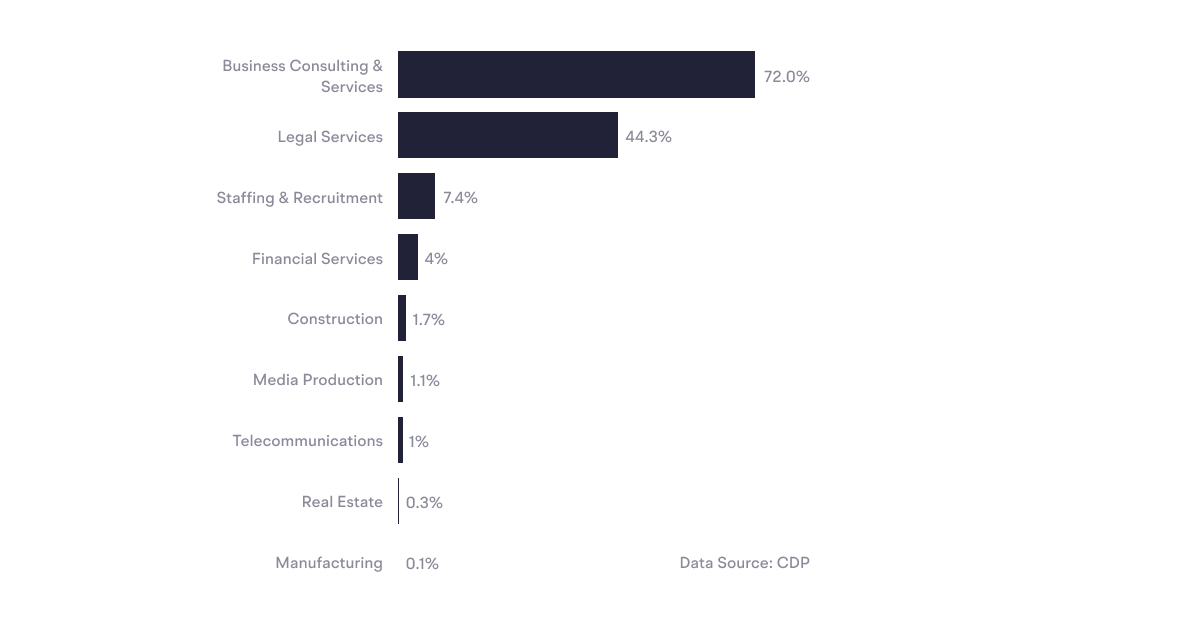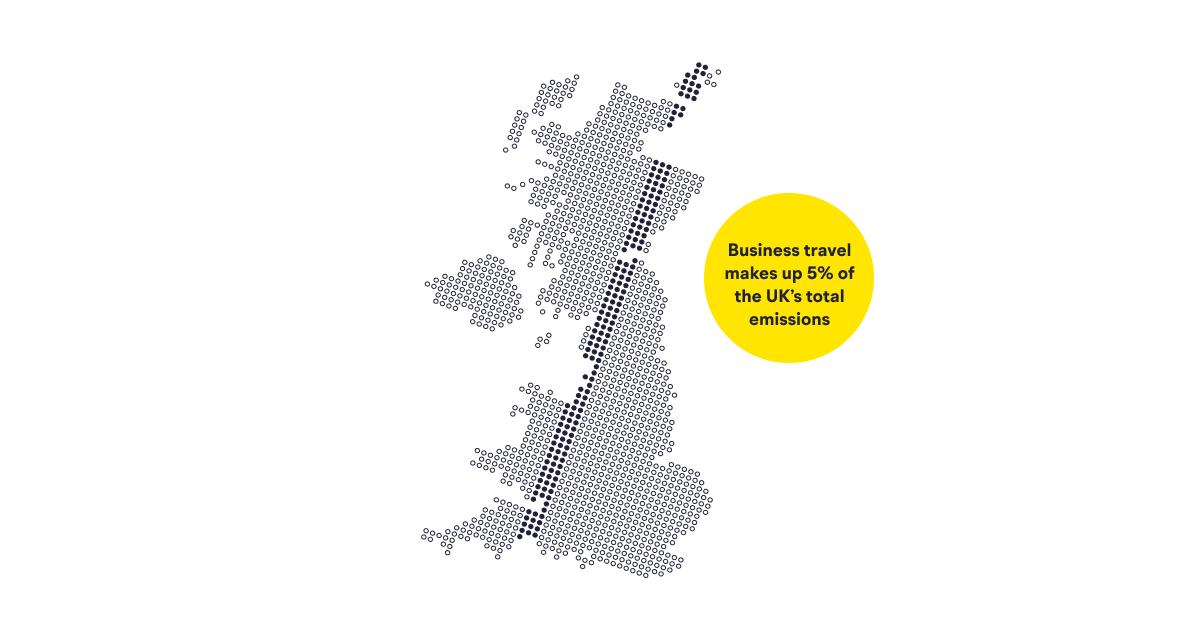Introduction to business travel emissions for SMEs

Why do business travel emissions matter?
Business travel can make up to 70% of your company's carbon footprint
Business travel is an activity that is visible to your clients, employees and investors, and can be negatively perceived if not managed proactively.
% Business Travel of Total Emissions by Industry (2019):

There is growing pressure and government regulation to reduce your carbon footprint
Given that business travel makes up 5% of the UK and US’s total emissions, it is likely to be an area of focus for future legislation.
Business travel dropped by 90% in early 2020 due to COVID-19, showing businesses there could be a different way of working. As the world opens up and travel resumes, we have a unique opportunity to address when and how we travel for work.

There are 5 sources of business travel emissions
- Rail travel
- Air travel
- Bus travel
- Automobile travel (e.g. business travel in rental cars or employee-owned vehicles other than employees commuting to and from work)
- Accommodation that your travellers stay in
The Greenhouse Gas (GHG) Protocol is the global standardised framework to measure and manage greenhouse gas emissions. Here’s how travel activity breaks down in the GHG protocol:

Unless you are a listed or lage company, there are currently no emissions reporting requirements
For listed and large companies it is mandatory to report on scope 1 and 2 emissions, but as scope 3 emissions usually account for more than 70% of a company’s carbon footprint, it is widely expected that you should start reporting your scope 3 emissions too.
For other companies, there may not be legal requirements yet, but if any of your clients are listed or large companies, you’re bidding for government work, or you’re apply for a sustainability credential (e.g. B Corps), you will need to start reporting your emissions.
Regardless of the legal requirements, measuring your emissions is an important first step for any sustainability policy, including business travel.
Best practice for addressing your business travel emissions
To address your business travel emissions, you first need to measure your emissions, make a plan to reduce them and then engage your employees to implement the plan.
This is an iterative cycle.

Find out more about how to approach reducing your business travel emissions in our Best Practice Guide here.

